- A new report from the John Locke Foundation sheds light on private school capacity in light of rising private school enrollment and increased participation in North Carolina’s Opportunity Scholarship voucher program
- Although private schools may have some empty seats, most private school leaders reported concerns about capacity and expected increases in demand for their services, yet many face barriers to growth such as a lack of funding or infrastructure
- Policymakers interested in increasing seat capacity can implement a variety of reforms, including stabilizing funding for school choice programs and encouraging educational entrepreneurship
Is North Carolina prepared to accommodate rising demand for private educational options and increased participation in the state’s school choice programs? A new report from the John Locke Foundation seeks to answer these questions.
Since 2020, private school enrollment across the state has grown by almost 32,000 students (a 31 percent increase), yet only 179 new schools have been opened during that same time period.
North Carolina Private School Enrollment and Number of Schools, 1991–92 to 2024–25

Source: North Carolina Department of Administration, Division of Non-Public Education
Participation in North Carolina’s school choice programs is also growing. As of Oct. 6, 2025, nearly 99,000 students across North Carolina were participating in the Opportunity Scholarship voucher program, which helps parents cover the costs of tuition and fees at private schools. Nearly 5,500 students were receiving ESA+ awards, which can be used by students with disabilities for a variety of educational expenses, including tuition, speech therapies, tutoring, transportation expenses, and more.
Number of Opportunity Scholarship Recipients, 2014–15 to Present
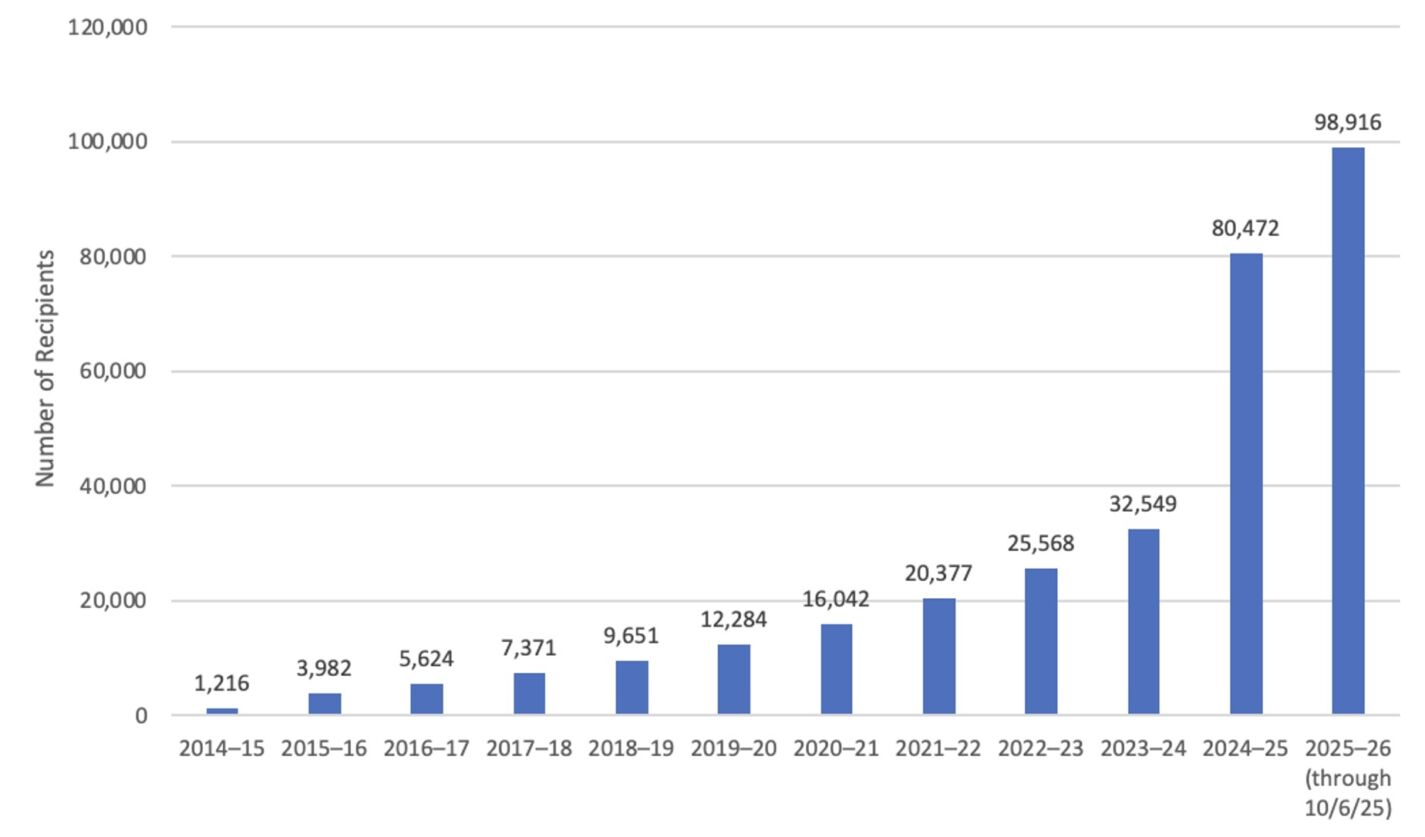
Source: North Carolina State Education Assistance Authority
Is North Carolina prepared to accommodate demand at such a scale? Does North Carolina have a regulatory and policy environment that encourages entrepreneurship and the creation of new schools to serve students and families?
Locke’s newest report, “Room to Grow,” finds that although some private schools may currently have unused capacity, North Carolina policymakers would be wise to consider how to address the challenges facing not only existing private schools but also education entrepreneurs as they seek to start or expand schools or programs.
Capacity of North Carolina private schools and barriers to growth
To determine private school capacity in North Carolina, the John Locke Foundation and EdChoice conducted two surveys. The first was sent to nearly 800 private schools registered in North Carolina. The results revealed that on average, responding schools had 21 percent unused capacity, which suggests that some schools could accept more students. The figure is not definitive, however; since it is an average, some schools could be completely full, while others could have significant room to grow.
Additionally, the effects of Opportunity Scholarship expansion may not yet be fully felt. A state report estimates that in the first year after expansion, less than 10 percent of recipients were “prior public-school attendee[s].” As more families hear about the program, demand for private educational options can be expected to grow.
North Carolina Private School Enrollment and Capacity, 2024–25
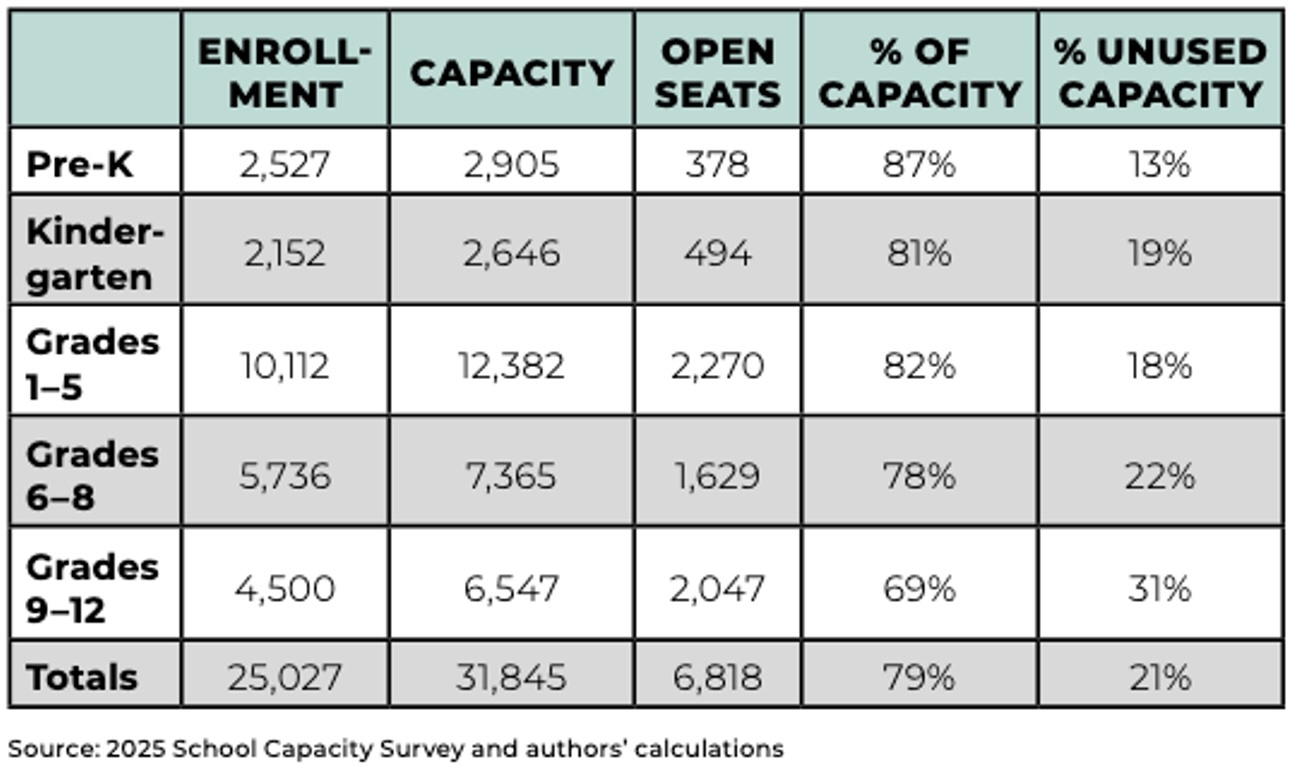
Source: Room to Grow
Indeed, most private school leaders anticipate this. Nearly 80 percent of respondents were concerned about capacity, and 92 percent said they expect demand for their services to grow.
School Leaders’ Expectations for Future Demand
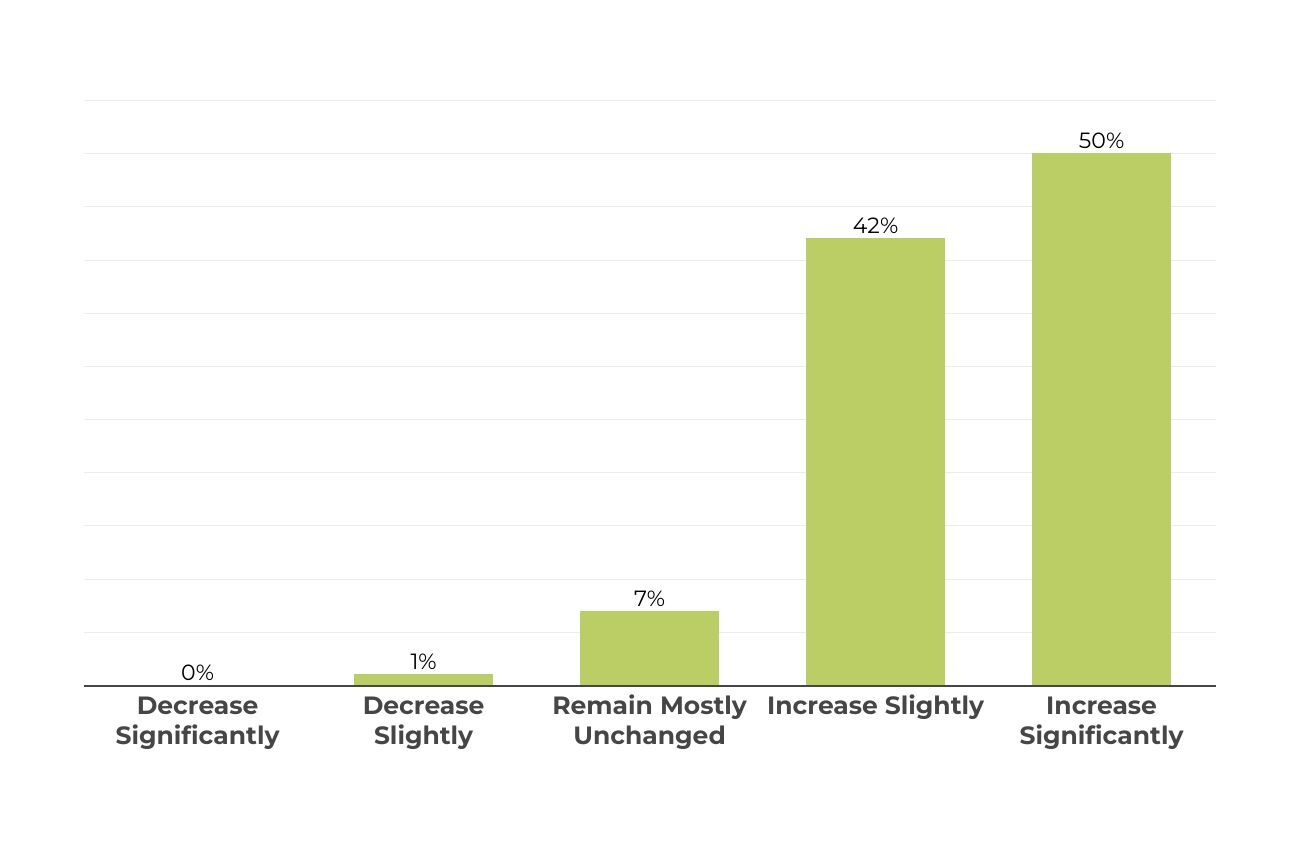
Source: Room to Grow
Many schools reported plans in the next one to two years to add new seats in classrooms, create new classrooms, or expand current campuses. Projecting out plans for the next three to five years, about 10 percent of schools also reported considering moving schools or starting new ones.
School Leaders’ Plans for Future Growth
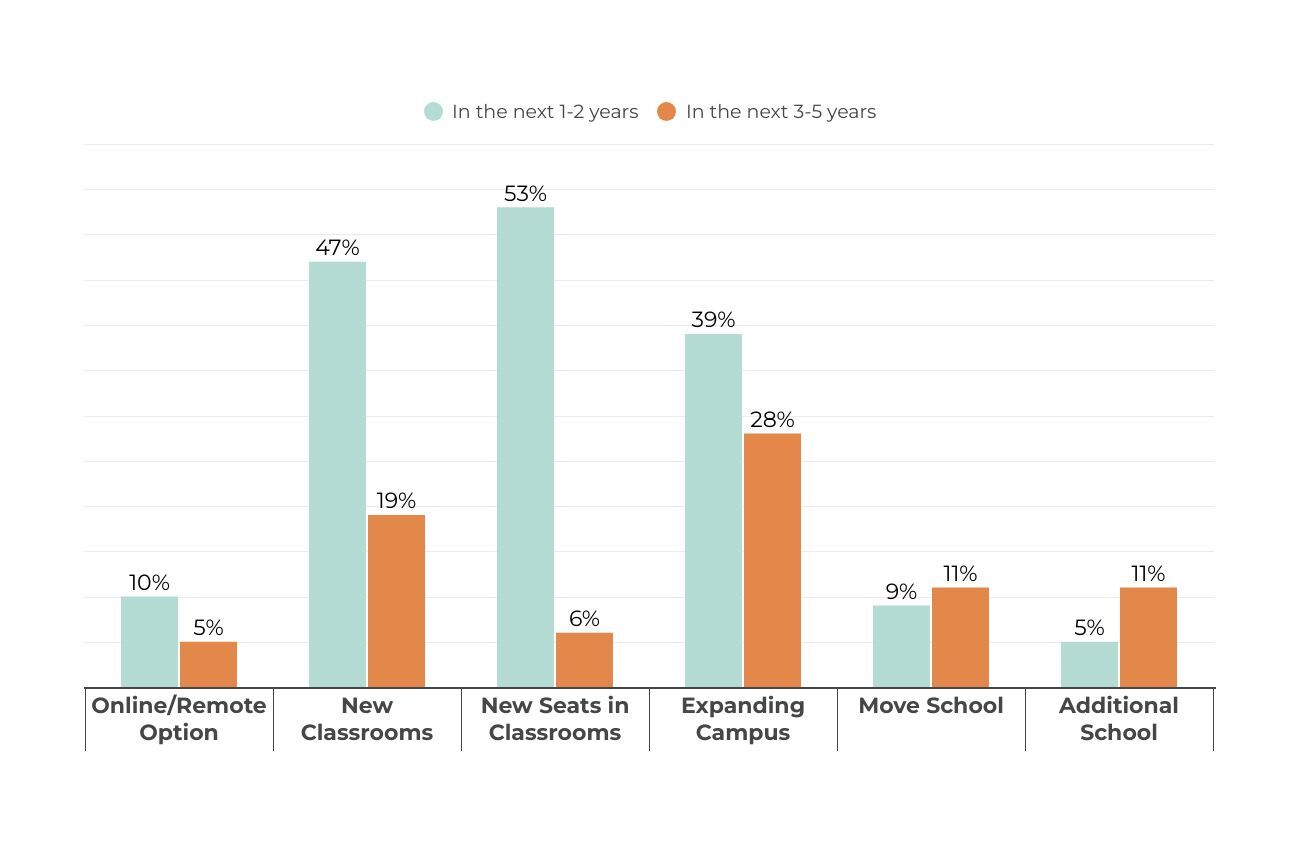
Source: Room to Grow
What is preventing schools from expanding? More common barriers included lacking funding or facilities and experiencing too much competition from other schools.
Reasons Why School Leaders Have No Current Expansion Plans

Source: Room to Grow
Challenges and opportunities for education entrepreneurs in North Carolina
Locke administered its second survey to education entrepreneurs — current or prospective funders, founders, or operators of new learning models like microschools or hybrid homeschools.
Most entrepreneurs surveyed (87 percent) cited plans to start or expand a school or educational program, yet many reported facing challenges such as a lack of funding, zoning/building regulations, other state/local regulations, and a lack of facilities. Lacking decision-making authority and facing competition from other schools were not barriers for most entrepreneurs surveyed.
Barriers to Education Entrepreneurs’ New Projects

Source: Room to Grow
Entrepreneurs also reported encountering a variety of regulatory or policy constraints as they administered or started their educational endeavors. Among the most common constraints were safety, fire, and health department regulations; land use or zoning regulations; and school choice program regulations.
Regulations and Policy Constraints Facing Education Entrepreneurs in North Carolina
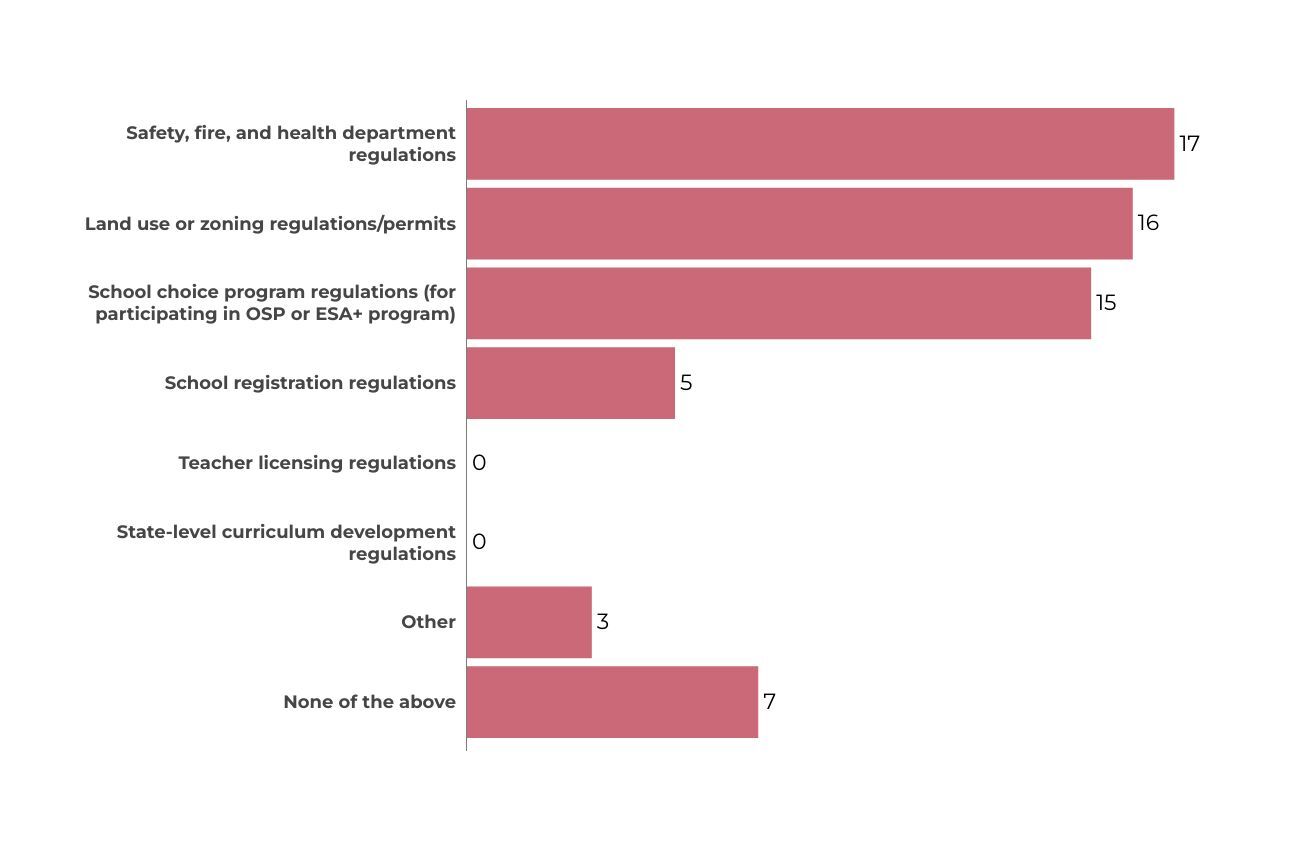
Source: Room to Grow
How to expand seat capacity in North Carolina private schools
How can policymakers address the challenges facing private schools and education entrepreneurs across the state? There are a number of ways to promote the successful implementation of school choice programs and help ensure that North Carolina schools can meet the growing demand for private educational options. For example, lawmakers could:
Stabilize funding for the Opportunity Scholarship and ESA+ programs.
Although North Carolina law sets out how much money the General Assembly intends to appropriate for these programs for several years into the future, those amounts are not guaranteed, as they can be changed by future legislatures. Moving to formula-based funding instead of yearly appropriations would lend more stability to the program and ensure that all students who apply for the program can receive a scholarship.
Promote school choice programs to more families who could benefit from participating.
Typically, the families who are first to hear about school choice programs are those whose children already attend private schools. Outreach is needed to spread the word to more families throughout the state who could benefit from the opportunities that the programs make possible. Creating a scholarship granting organization, either public or private, could be one way to help raise awareness about the Opportunity Scholarship and ESA+ programs. Greater awareness and participation will create market signals leading to increased supply.
Expand access to funding for start-up and expansion costs.
Many schools and entrepreneurs delay major projects due to a lack of funding. Incentivizing private donations via tax credits could be one way to supplement other revenue sources.
Where possible, reduce the regulatory burden on starting or expanding schools.
While some regulation is necessary to protect students’ health and safety, it need not be unduly burdensome. Also, because emerging educational models — like microschools and hybrid homeschools — don’t resemble traditional brick-and-mortar providers, some regulations that apply to traditional private schools may not be relevant to them. These would include certain building and zoning regulations. Oftentimes, parents choose these models precisely because of their nontraditional features, and state policy should protect parents’ right to choose these options.
Encourage effective public/private partnerships.
Public and private entities should work together not only to spread the word about North Carolina’s school choice programs but also to explore ways to improve funding mechanisms for the capital needs of private schools.
Promote educational entrepreneurship.
Requirements for participating in North Carolina’s school choice programs as educational providers should respect the diversity of educational providers and be as minimally invasive as possible. State laws and regulations should promote entrepreneurship and allow entrepreneurs to start and expand new schools and programs.










